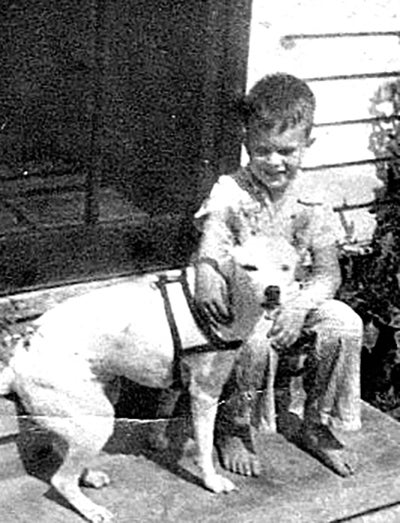And Now You Know: Massive explosion rocks Orange, ends Texas creosote plant operations
Published 12:30 am Saturday, February 6, 2021

- And Now You Know
|
Getting your Trinity Audio player ready...
|
(Editor’s note: This is part two of a two-part series.)
At 9:30 p.m., on October 11, 1947, an explosion occurred that shocked and panicked Orange and ended production at the Texas Creosote Company’s plant.
Called “the worst catastrophe to ever hit Orange,” the explosion rocked buildings in Orange, broke windows as far as three miles away, was loud enough to be heard in Beaumont, and plunged most of Orange in darkness due to the concussion knocking out numerous electric transformers.
Orange firefighters, first on the scene, used their portable flood lights. They were aided by lights on a tug sent from the Navy base. Assistance was sent from the Port Arthur and Beaumont fire departments, along with the Navy sending a tug with firefighting equipment.
Only six months earlier on April 16, the freighter Grandchamp had exploded at the Texas City docks causing massive damage and loss of life. This was fresh on the minds of Orange citizens as the explosion in Orange occurred.
Within a short time after the explosion, the streets leading to the creosote plant became jammed with curious people causing fire trucks and ambulances to be unable to get to and from the scene of the explosion. The Orange police department eventually cleared the three- and one-half miles of streets so that emergency vehicles and equipment could travel. They also established guards at the plant gates.
The worst panic that night occurred at Tiger Stadium where hundreds of people were attending a football game between Orange and Goose Creek. The explosion rocked the stadium and plunged it into immediate darkness. Crowds of people jammed the exits, but fortunately there were no serious injuries.
A local telephone operator said her switchboard “lit up like a church house” only a few seconds after the blast.
The Salvation Army set up a portable stand after the explosion and served food and coffee to the firefighters throughout the night.
Early on, no definite cause for the explosion was found, but the fire department stated it had apparently been caused by a faulty relief valve on the pressure chamber where the timbers were being treated. The treating chambers normally operated at a pressure of 500 pounds per square inch.
Howard Hollis was the treating engineer on duty in the treating room when the explosion occurred. When he reported for duty, Irvin Archer, another treating engineer and Hollis’ brother-in-law, told him on the day shift boiler inspectors had been working on a relief valve all day and there had been a problem controlling pressure.
Hollis watched the automatic pressure gauge and when pressure began a steady climb, he attempted to open the manually operated valve to relieve the increasing pressure. His efforts were not successful.
When the first firefighters arrived on the scene, they found Hollis near the gate trying to crawl away from the fire. No one was ever sure if he had been blown clear of the building or if he had managed to crawl to the place he was found.
Hollis was taken to the Frances Ann Lutcher Hospital where he was treated for third degree burns over most of his body. The burns were caused from scalding steam and boiling hot creosote.
He was able to talk a little as he drifted in and out of consciousness. He died less than 24 hours after being injured.
There were only two other employees in the plant that night, neither of them were injured.
Among the firefighters, there were only a few injuries, mostly slight burns.
The immediate effect to the plant after the explosion was the loss of 50 jobs. Most of the remaining 150 workers were involved in shipping out the already treated products, mostly poles for telephone or electric service, or shipping the raw materials to the Houston plant where they would be treated to fill contracted orders.
The plant had originally cost $25,000 when opened in 1925. The estimated damages from the explosion were expected to be about $75,000. The cost to rebuild the plant was estimated at $125,000 and to take about four months.
Due to the expense of damages and the cost to rebuild, the owners decided to close the plant and end operations of the company.
As workers shipped out finished products and sent the raw materials to Houston they were laid off as their duties were completed.
The houses of the Mexican workers were sold and relocated to a site near Rebeck Crossing.
The remaining equipment was sold and the site of the company cleared.
“And now you know.”
And Now You Know: Texas Creosote Plant: The beginning and the operation







